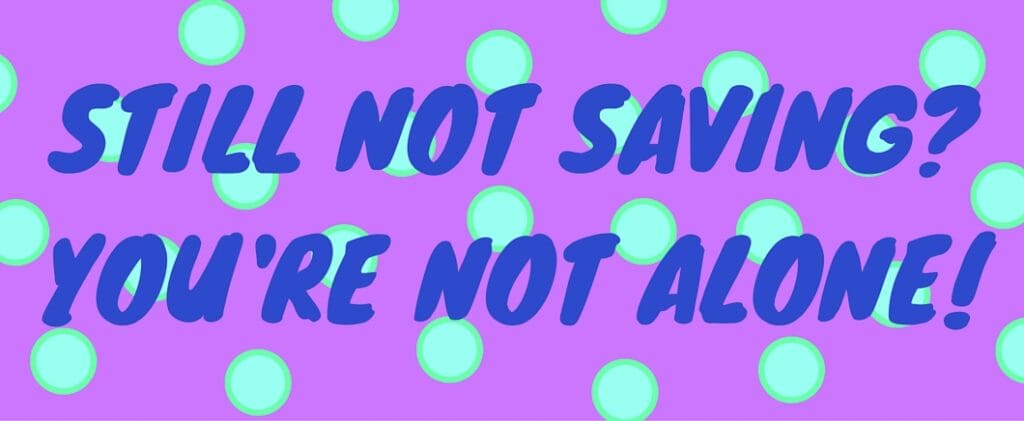
We like to think of ourselves as learning animals. We take our lived experiences, extract valuable lessons from them, and use that information to improve our daily lives. This is how we get better at doing things over time.
However, a recent survey from Bankrate.com shows that we haven’t yet learned the lessons of the Great Recession. While Americans paid down their debt in the months since the recovery, a shocking 26 percent of Americans still report having no emergency fund. Another 24 percent have less than three months of living expenses saved. Only 23 percent of survey respondents have the recommended 6 months of living expenses saved.
It’s not for lack of caring. The same survey reveals that 60 percent of Americans don’t feel comfortable with their current savings position. We all know we need to save more, but we still don’t actually do it. Why is that?
Many experts say the problem is there’s just not enough money left at the end of the month for savings. This is true no matter how much you make; fewer than half of people with incomes more than $75,000 have that six-month cushion. Rebecca Kennedy, the founder of Kennedy Financial Planning in Denver, says that after utilities, rent and other expenses, there’s no money left over for savings.
Not having an emergency fund is like walking a tightrope without a net. No one likes to think about it, but what you would do tomorrow if you lost your job, wrecked your car or had to miss work due to illness? In 2008, the answer provided by many would have involved tapping into a home equity line of credit. But, when house prices began falling and interest rates rose, these people had to rely on expensive debt to finance their lifestyles. That forced them to postpone retirement, miss vacations, or compromise on educational plans for their children.
You can avoid this problem. It may seem impossible to create an emergency fund, but there are always ways to squeeze a few extra dollars out of each month. Consider these seven ideas:
1.) Start small. If you save $5 a week for four years, you’ve got an emergency fund of just over $1,000. That’s a great start to a rainy day fund, and you can do it by giving up one vending machine soda a day. Many people stash every $5 bill they get in a coffee can or store all their loose change. You might also consider a 52-week plan where you save $1 the first week, $2 the second, and so on. These incremental steps can make a big difference in the long term – at the end of a year, you’ll have saved almost $1,400.
2.) Take on a second job. It’s never fun to leave one job and head to another. Remember, though, that you’ll have to work fewer hours to build a savings than you would have to work to pay down debt. Don’t limit your search to part-time jobs. Consider freelancing, taking surveys, babysitting or selling something via home parties. You don’t need to finance another lifestyle. You just need to make enough to start a savings fund.
3.) Pay yourself first. Think about your savings as another bill. This mode of thinking prevents you from treating the money as discretionary and frittering it away on impulse buys and luxuries. Make your savings as important as your house note, car payment, and utility bills.
4.) Automate it. Consider setting up a Club Account or a savings account with direct deposit. This step ensures you’ll remember to take the savings out of your budget each month. You’ll also be earning a little bit of interest on your savings to help you on your way. These savings products have the flexibility to allow for immediate withdrawals if you need it, but are limited by law in how many withdrawals they allow. This means your money is there when you need it, but far enough away that you won’t be tempted to spend it.
5.) Put luxury in the back seat. Whether it’s a fancy coffee drink, a pack of cigarettes, a fast food meal, or the latest cell phone, things we don’t need will consume much of our income. You don’t need to give up your vices all together. In fact, financial expert Candice Elliot compares these choices to dieting. Repeated denials can drain our will-power, leading us to snap back harder. The answer may be to cut back on our consumption instead. Go without your Starbucks on Friday or wait 6 months for the price to drop on a gadget. Put the difference into your savings account.
6.) Look at recurring expenses. If you’re honestly spending everything you get on your monthly bills, it may be time to look at them. Consider cutting your TV services or switching to a pre-paid cell phone plan. Simply giving up a premium movie channel for a year could save you as much as $240. Now that Game of Thrones is over for the season, do you even need it? These don’t have to be long-term choices. Your goal should be to make temporary sacrifices to ensure yourself against future loss.
7) Don’t spend it. Your emergency fund should only be used for actual emergencies. Ask three questions before you take even a dollar out of your emergency fund. Is the thing I’m paying for absolutely necessary? Is there nothing I can cut back on this month to pay for it? Do I have to pay for it right now? Unless the answer to all of these questions is yes, leave the money where it is.
SOURCES:
http://credit.about.com/od/avoidingdebt/qt/emergencyfund.htm
http://www.daveramsey.com/article/build-an-emergency-fund-fast/lifeandmoney_saving
http://www.bankrate.com/finance/consumer-index/financial-security-charts-0614.aspx
http://www.wtop.com/675/3649150/Americans-arent-saving-enough-money